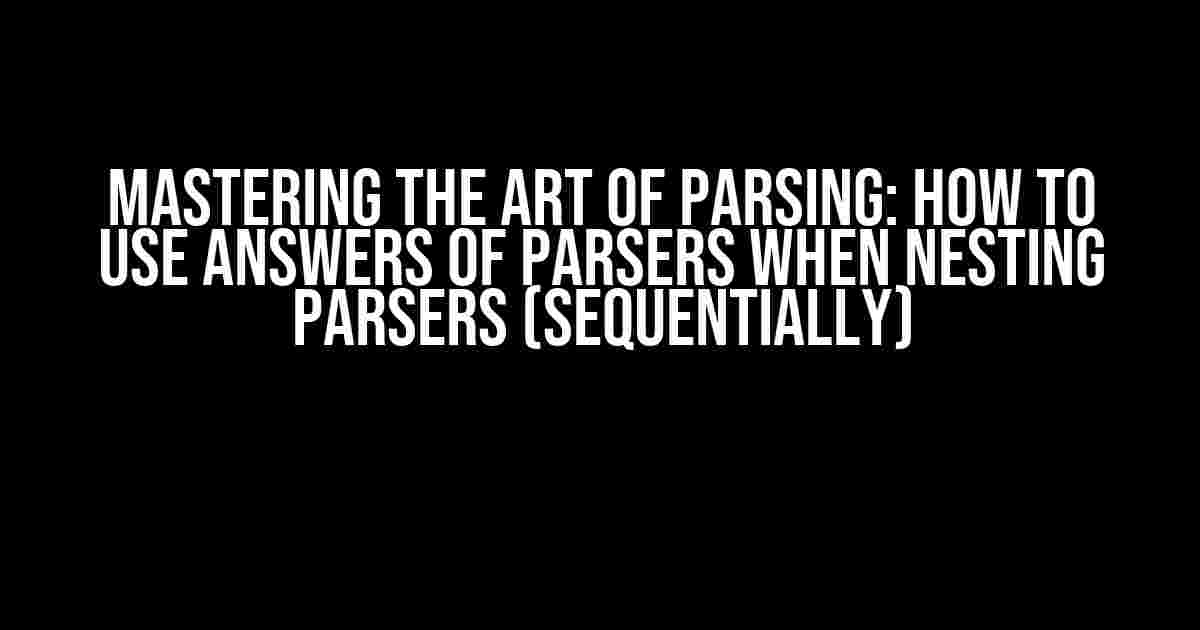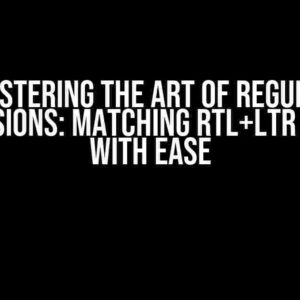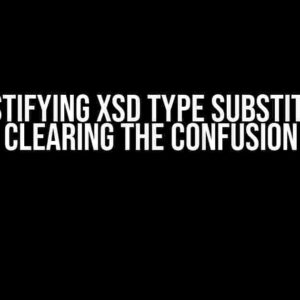Are you tired of wrestling with perplexing parsing issues? Do you find yourself lost in a sea of nested parsers, unsure of how to harness the power of their answers? Fear not, dear reader, for today we embark on a thrilling adventure to tame the beast of parsing and unlock the secrets of using parser answers when nesting parsers sequentially!
What are Parsers, and Why Do We Need Them?
Parsers are the Unsung Heroes of the programming world. They toil behind the scenes, breaking down complex strings of text into manageable chunks, allowing our beloved algorithms to make sense of it all. But what happens when we need to parse within a parse? That’s where nesting parsers come into play.
The Problem with Nesting Parsers
When we nest parsers, we create a hierarchical structure where one parser feeds into another. Sounds simple, right? Well, it’s not. The challenge lies in harnessing the answers of these internal parsers and using them to inform the outer parser’s decision-making process. It’s like trying to assemble a puzzle blindfolded while being attacked by a swarm of bees. Okay, maybe it’s not that dramatic, but you get the idea!
Understanding Parser Answers
A parser answer, put simply, is the output of a parser. It’s the result of the parser’s hard work in breaking down the input string into a meaningful structure. But what does this answer look like, and how can we use it?
<parser_name> ::= <rule_name> <answer>
In the above example, `
Types of Parser Answers
Parser answers can be broadly classified into three categories:
- Scalar Answers: These are single values, such as integers, strings, or booleans. They’re the simplest form of parser answer and are often used in straightforward parsing scenarios.
- Structured Answers: These are complex data structures, such as arrays, objects, or trees. They provide a richer representation of the parsed data and are commonly used in more intricate parsing situations.
- Composite Answers: These are a combination of scalar and structured answers. They’re the most versatile type of parser answer and are often employed in advanced parsing scenarios.
Nesting Parsers Sequentially: The Magic Happens
Now that we have a solid grasp of parser answers, it’s time to explore the art of nesting parsers sequentially. This is where the real magic happens!
<outer_parser> ::= <inner_parser> <answer> <next_rule>
In the above example, `
Example: Parsing a Simple Arithmetic Expression
Let’s consider a simple arithmetic expression parser, where we need to parse a string of the form `2 + 3 * 4`. We’ll use two parsers: `expr_parser` and `term_parser`. The `expr_parser` will parse the entire expression, while the `term_parser` will parse individual terms.
expr_parser ::= term_parser <term_answer> (<ADD>|<SUB>) expr_parser term_parser ::= <NUM>|<VARIABLE>
In the above example, `expr_parser` uses the answer of `term_parser` to determine whether to apply the `ADD` or `SUB` rule next. This is a classic example of using a parser answer to inform the outer parser’s decision-making process.
Best Practices for Using Parser Answers
Now that we’ve explored the basics of using parser answers when nesting parsers sequentially, it’s essential to discuss some best practices to keep in mind:
- Document Your Parsers: Clearly document your parsers, including their answers and how they’re used. This will help you and your team understand the parsing process and make informed decisions.
- Choose the Right Answer Type: Select the answer type that best suits your parsing scenario. Scalar answers are ideal for simple situations, while structured answers are better suited for more complex cases.
- Use Meaningful Answer Names: Assign meaningful names to your parser answers to improve code readability and maintainability.
- Test Thoroughly: Test your parsers extensively to ensure they’re producing the expected answers and behaving as intended.
- Refactor and Optimize: Regularly refactor and optimize your parsers to improve performance and reduce complexity.
Conclusion
And there you have it, folks! With this comprehensive guide, you’re now equipped to tackle the challenges of using parser answers when nesting parsers sequentially. Remember to stay calm, keep your parser answers organized, and always test thoroughly. Happy parsing!
| Parser Answers | Description |
|---|---|
| Scalar Answers | Single values, such as integers, strings, or booleans |
| Structured Answers | Complex data structures, such as arrays, objects, or trees |
| Composite Answers | A combination of scalar and structured answers |
By mastering the art of using parser answers when nesting parsers sequentially, you’ll unlock the full potential of your parsing algorithms and become the parser whisperer your team needs. So go forth, dear reader, and conquer the world of parsing!
Here are 5 Questions and Answers about “How to use answers of parsers when nesting parsers (sequentially)” in English language with a creative voice and tone:
Frequently Asked Question
Get clarity on how to use parser answers when nesting parsers in a sequence!
How do I access the output of the previous parser when nesting parsers?
When nesting parsers, you can access the output of the previous parser by using a reference to the previous parser’s output. This reference is usually denoted by a variable name or an index. For example, in some parsing libraries, you can access the output of the previous parser using `$prev` or `results[0]`. Consult your parser library’s documentation for specific syntax and usage.
Can I use the output of one parser as an input to another parser in a sequence?
Absolutely! This is the whole point of nesting parsers in a sequence. The output of one parser becomes the input for the next parser in the sequence. This allows you to break down complex parsing tasks into smaller, more manageable chunks, and then combine the outputs to achieve the desired result.
What happens if a parser in the sequence fails to produce an output?
If a parser in the sequence fails to produce an output, the entire parsing process typically stops, and an error is thrown. This is because the subsequent parsers in the sequence rely on the output of the previous parsers to function correctly. To handle such scenarios, you can implement error handling mechanisms, such as try-catch blocks or error callbacks, to gracefully handle parsing failures.
How do I combine the outputs of multiple parsers in a sequence?
The way you combine the outputs of multiple parsers in a sequence depends on the specific requirements of your parsing task. You can concatenate the outputs, merge them into a single data structure, or apply transformations to combine the results. Some parser libraries provide built-in functions or operators for combining parser outputs, while others may require custom implementation.
Are there any performance considerations when nesting parsers in a sequence?
Yes, nesting parsers in a sequence can have performance implications, as each parser in the sequence needs to process the input data. To mitigate this, consider optimizing your parsers for performance, using caching mechanisms, and minimizing the number of parsers in the sequence. Additionally, some parser libraries provide optimization techniques, such as lazy evaluation or parallel processing, to help improve performance.
I hope this helps!




